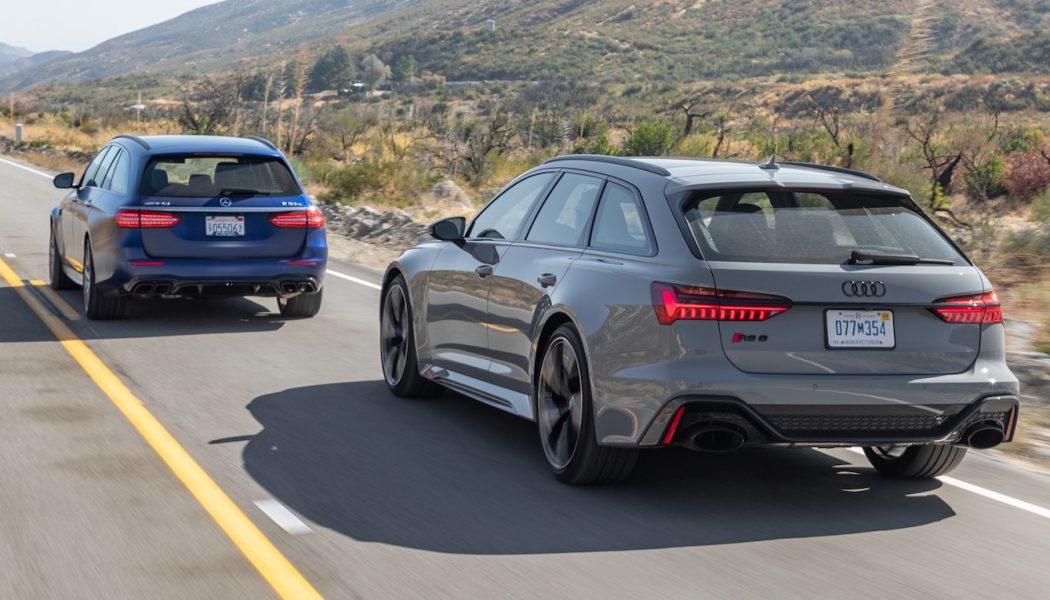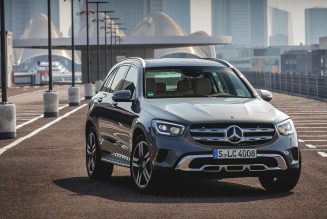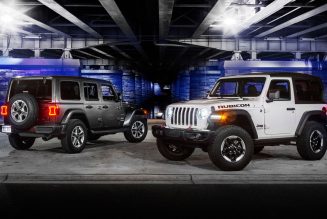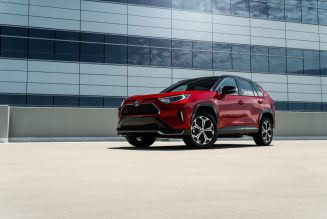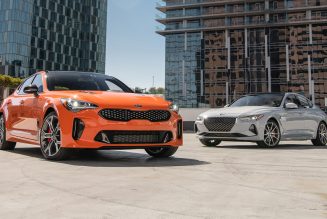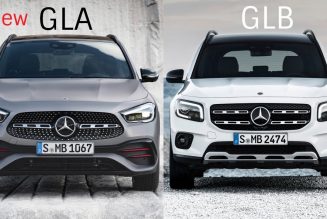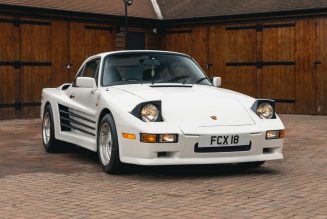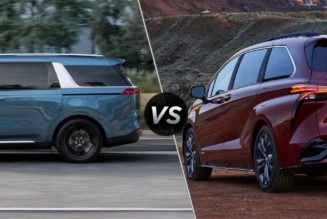Mercedes-Benz E-Class Full Overview
Case in point: The Audi RS6 starts life at $110,045, and the E63 S Wagon begins at $113,500. Emphasis on begins, as by the time a few option boxes are ticked the total kitty for the Mercedes is $129,120. Not to be outdone, the Audi’s price swelled to $131,645 as tested. Not cheap, not even kinda cheap, though for some, well worth the scratch. We’ll get to why that’s so in a moment.
Back to the similarities, both high-performance haulers are wagon variants of their respective brands’ brot und butter midsize sedans. The RS6 is underpinned by the (we suspect) quite fine A6 Avant, whereas the AMG is a hot-rodded version of the (no doubt) excellent E-Class Wagon. Why my uncertainty? For reasons too cynical to breathe air into, neither Audi nor Mercedes-Benz deems the U.S. an appropriate market for their normal wagons. Instead, Americans get the A6 Allroad and the E450 All-Terrain, ever so slightly jacked-up wagons that pass some legal/marketing definition of an SUV, though both of which fail to pass the SUV smell test. I’ve digressed, though not without an acceptable serving of self-righteousness. Point is, both uber-wagons have fantastic bones (especially the AMG, as the 2021 E-Class just won our 2021 Car of the Year award), and a solid skeleton is a great place to start.
Then just start adding power—like lots of it. My mostly informed opinion since 2015 is that the Dodge Hellcat’s stratospheric 707 horsepower and 650 lb-ft of torque so shattered power norms (especially now that the engine makes 717 hp) that we car enthusiasts as a community can no longer think clearly. For instance, because Hellcat, you might hear that the RS6’s 4.0-liter, twin-turbo V-8 produces 591 horsepower and 590 lb-ft of torque and think, “That’s not that much.” I’m a victim of this sort of relativism, as well, but let me tell you, that’s a wagon full of power. Bazinga! Naturally, inevitably, the AMG makes even more power from its own hand-assembled, 4.0-liter, twin-turbo V-8: 603 horses along with 627 lb-ft of twisting force. Both wagons ship with AWD, though the E63 S has a Drift mode that turns off power to the front axle, allowing the monster motor’s full output to hit only the rear wheels. I’m still smiling. The Audi has an eight-speed ZF automatic transmission, while the AMG uses a high-output version of Mercedes’ nine-speed autobox.
The Audi is the larger vehicle, depending, of course, on how you define the word “larger.” The RS6 weighs more, 4,862 pounds versus 4,658 pounds for the E63 S Wagon. First of all, yes, both schleppers are shockingly heavy. And why is the Audi over 200 pounds fatter? Cars in general are getting heavier as they become ever more laden with safety, technology, and, in the case of these two, biggish, turbocharged eight-cylinder engines that require plenty of cooling power, as well as heavy all-wheel-drive hardware. Still, nearly 2.5 tons? That’s pretty absurd for supposed performance cars.
Back to defining larger, the Mercedes-AMG has a fractionally longer wheelbase (by 0.4 inch) and is the same amount longer overall, though the Audi is wider and a skosh taller. The Mercedes has 5 extra cubic feet of cargo space in the back (35 to the Audi’s 30).
The Audi comes with much bigger wheels and tires than the AMG, 22-inch Pirelli P Zeroes with a 285 section contact patch all around versus the AMG’s 20-inch 265 front, 285 rear Michelin PS4s. The Audi’s brakes are massive, especially in the front: 17.3-inch carbon-ceramic rotors (14.6-inch in the back) that are not only the largest brakes fitted to any production car, but the same rotors you’ll find on other Volkswagen Group super products like the Lamborghini Urus and Porsche Cayenne Turbo. That makes good sense because the RS6 weighs just 137 pounds less than the Urus. The E63 S Wagon also comes with large, carbon-ceramic rotors (15.8-inch front, 14.2-inch rear), though like the aforementioned Hellcat horsepower dissonance, the AMG’s brakes sure don’t sound as large. They are, however, much more effective. The Mercedes wagon can stop itself from 60 mph in 104 feet. The Audi requires 113 feet to do the same. That’s a considerable gulf, though around our figure-eight test track, which features two bog braking zones, both wagons complete the lap in 24.2 seconds.
What about straight-line performance? Glad you asked! Despite their lardiness, these two wagons are veritable cheetahs. The Audi hits 60 mph in 3.1 seconds, and the AMG needs just 3.0 seconds to do the same. Crazy, I know. Pull 200 pounds out of the Audi, and these two would be dead-butts even, I bet. The Mercedes’ half-pound-per-horsepower weight advantage really shows up in the quarter mile, where it does the deed in 11.2 seconds at 124.0 mph, whereas the still blisteringly quick RS6 needs 11.5 seconds at 120.2 mph. Interestingly, the E63 S Wagon ties its sedan counterpart in both 0-60 and quarter-mile times, though it is 0.2 mph slower at the end of 1,320 feet. The RS6 is essentially a wagon version of the swoopy-roofed RS7, though we haven’t tested a 2021 model yet. For a little perspective, the 760-horsepower Ford Shelby GT500 CFTP (Carbon Fiber Track Pack, aka the lighter version) runs the quarter mile in (a traction-limited) 11.3 seconds, though it traps at 131.6 mph. My point: These two station wagons are ridiculous both in theory and reality. What a world.
So, which wins? In terms of luxury, ride quality, and tech features, the two are nearly identical. Mercedes’ MBUX infotainment system has more depth to its functionality, but Audi’s second-generation Virtual Cockpit Plus is easier to use. As far as design goes, the RS6 is an absolute knockout. One of the best-looking wagons, well, ever. Unlike the E63 S, the RS6 actually receives different body panels—40mm wider fenders, specifically—though the front fenders are shared with the RS7. The Mercedes only gets an AMG-specific grille. That said, the long-roof AMG is a good-looking car. It’s just that the Audi is up a shelf or two in terms of visual desirability. It’s the wagon that starts conversations at gas stations.
Which wagon for me? AMG, hands down. Why? Because the E63 S drives so much better than the RS6. I hate to say it, let alone type it, but the Audi was a dynamic disappointment. From steering feel, to brake response, to suspension sophistication, to body control, to engine ferocity, the AMG was better. In terms of driving fun, driver confidence, and vehicle precision, this wasn’t a fair fight. Case in point: When I was looping these two plus the Porsche Panamera Turbo S Sport Turismo in the canyons above Los Angeles, the Porsche and the AMG could keep up with each other. If you were driving the Audi, after a few turns you couldn’t even see the other wagons.
The above being said, how can we square the fact that the two had identical figure-eight times? If I had to pick the big reason, I’d say it’s body control. The Audi’s air suspension is simply inferior to the AMG’s similar setup. When you’re driving on a track, be it a racetrack or an autocross—and our figure-eight track is essentially a modified autocross (cones in a parking lot)—you can be a little sloppy and it’s no big deal. Counterintuitive, I know, but think about it. The average racetrack is, what, 40 feet wide? How wide’s a single lane up on a mountain? 10 or 12 feet, tops. If your car isn’t buttoned down, it won’t be able to move as quickly as a car that is. Enter the RS6. None of us could push it as hard as we could the AMG. Then throw in a weird-feeling brake pedal and some midcorner understeer, and, well folks, you’ve got yourself a second-place finisher in this two-car comparison test.
As for the AMG E63 S Wagon, wow. What a stonking, snarling, fuming, bloodthirsty animal of a car. It roars, claws out with its teeth bared in a way that few other cars do. The variety of emotions this thing elicits from its driver is staggering in magnitude. You’re terrified, wowed, impressed, shocked, and then giddy seemingly all at once. One of our stock-in-trade sayings here at MotorTrend is: driver confidence. At the end of the day, the Audi doesn’t instill much, whereas the Mercedes-AMG comes packing tons of it. Well, a few dozen cubic feet, at least.
CONSUMER INFO
| 2021 Audi RS6 Avant | 2021 Mercedes-AMG E63 S 4Matic+ | |
| POWERTRAIN/CHASSIS | ||
| DRIVETRAIN LAYOUT | Front-engine, AWD | Front-engine, AWD |
| ENGINE TYPE | Twin-turbo 90-deg V-8, alum block/heads | Twin-turbo 90-deg V-8, alum block/heads |
| VALVETRAIN | DOHC, 4 valves/cyl | DOHC, 4 valves/cyl |
| DISPLACEMENT | 243.9cu in/3,996 cc | 243.0 cu in/3,982 cc |
| COMPRESSION RATIO | 10.1:1 | 8.6:1 |
| POWER (SAE NET) | 591 hp @ 6,000 rpm | 603 hp @ 5,750 rpm |
| TORQUE (SAE NET) | 590 lb-ft @ 2,050 rpm | 627 lb-ft @ 2,500 rpm |
| REDLINE | 6,750 rpm | 7,000 rpm |
| WEIGHT TO POWER | 8.2 lb/hp | 7.7 lb/hp |
| TRANSMISSION | 8-speed automatic | 9-speed automatic |
| AXLE/FINAL-DRIVE RATIO | 3.20:1/2.14:1 | 3.06:1/1.84:1 |
| SUSPENSION, FRONT; REAR | Multilink, air springs, adj shocks, anti-roll bar; multilink, air springs, adj shocks, anti-roll bar | Multilink, air springs, adj shocks, anti-roll bar; multilink, air springs, adj shocks, anti-roll bar |
| STEERING RATIO | 15.9:1 | 14.5:1 |
| TURNS LOCK-TO-LOCK | 2.3 | 2.1 |
| BRAKES, F; R | 17.3-in vented, drilled, carbon-ceramic disc; 14.6-in vented, drilled, carbon-ceramic disc, ABS | 15.8-in vented, drilled, carbon-ceramic disc; 14.2-in vented, drilled, carbon-ceramic, ABS |
| WHEELS | 10.5 x 22-in cast aluminum | 9.5 x 20-in; 10.0 x 20-in, forged aluminum |
| TIRES | 285/30R22 101Y Pirelli P Zero AO | 265/35R20 99Y; 295/30R20 101Y Michelin Pilot Sport 4S M01 |
| DIMENSIONS | ||
| WHEELBASE | 115.3 in | 115.7 in |
| TRACK, F/R | 65.7/65.0 in | 64.9/62.8 in |
| LENGTH x WIDTH x HEIGHT | 196.7 x 76.8 x 58.6 in | 197.1 x 75.1 x 58.0 in |
| TURNING CIRCLE | 40.0 ft | 41.0 ft |
| CURB WEIGHT | 4,862 lb | 4,658 lb |
| WEIGHT DIST, F/R | 55/45% | 54/46% |
| SEATING CAPACITY | 5 | 5 |
| HEADROOM, F/R | 38.3/39.5 in | 37.5/39.6 in |
| LEGROOM, F/R | 41.3/37.4 in | 41.5/35.8 in |
| SHOULDER ROOM, F/R | 57.8/56.5 in | 57.8/57.1 in |
| CARGO VOLUME, BEH F/R | 63.8/30.0 cu ft (est) | 64.0/35.0 cu ft |
| TEST DATA | ||
| ACCELERATION TO MPH | ||
| 0-30 | 1.1 sec | 1.2 sec |
| 0-40 | 1.7 | 1.7 |
| 0-50 | 2.4 | 2.3 |
| 0-60 | 3.1 | 3.0 |
| 0-70 | 4.1 | 3.9 |
| 0-80 | 5.1 | 4.9 |
| 0-90 | 6.4 | 6.0 |
| 0-100 | 7.8 | 7.3 |
| 0-100-0 | 12.3 | 11.4 |
| PASSING, 45-65 MPH | 1.6 | 1.4 |
| QUARTER MILE | 11.5 sec @ 120.2 mph | 11.2 sec @ 124.0 mph |
| BRAKING, 60-0 MPH | 113 ft | 104 ft |
| LATERAL ACCELERATION | 0.95 g (avg) | 0.98 g (avg) |
| MT FIGURE EIGHT | 24.2 sec @ 0.81 g (avg) | 24.2 sec @ 0.83 g (avg) |
| TOP-GEAR REVS @ 60 MPH | 1,500 rpm | 1,400 rpm |
| BASE PRICE | $110,045 | $113,500 |
| PRICE AS TESTED | $131,645 | $129,120 |
| STABILITY/TRACTION CONTROL | Yes/Yes | Yes/Yes |
| AIRBAGS | 10: Dual front, f/r side, f/r curtain, front knee | 10: Dual front, f/r side, f/r curtain, front knee |
| BASIC WARRANTY | 4 yrs/50,000 miles | 4 yrs/50,000 miles |
| POWERTRAIN WARRANTY | 4 yrs/50,000 miles | 4 yrs/50,000 miles |
| ROADSIDE ASSISTANCE | 4 yrs/Unlimited miles | 4 yrs/50,000 miles |
| FUEL CAPACITY | 19.3 gal | 21.1 gal |
| EPA CITY/HWY/COMB ECON | 15/22/17 mpg | 16/23/18 mpg |
| ENERGY CONS, CITY/HWY | 225/153 kWh/100 miles | 211/147 kWh/100 miles |
| CO2 EMISSIONS, COMB | 1.11 lb/mile | 1.05 lb/mile |
| RECOMMENDED FUEL | Unleaded premium | Unleaded premium |
